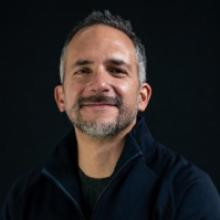
José E. Andrade is the George W. Housner Professor of Civil and Mechanical Engineering and the former Cecil and Sally Drinkward Leadership Chair of the Department of Mechanical and Civil Engineering at Caltech. Currently, Dr. Andrade serves as Vice President of Innovation and Civil Engineering at Energy Vault, Inc. (EV), the creator of green energy storage solutions at grid scale, including its proprietary gravity energy storage system (GESS) solution. Dr. Andrade’s current mission is to productize EV’s next-generation technologies and enable flawless deployment to customers worldwide.
His research interests lie in the area of complex systems mechanics, with application to problems at the interface of physics and mechanics to develop predictive analytical and numerical models for granular, porous and discontinuous systems (e.g., soils, regolith, mechanical batteries), with especial application to energy applications and space missions by NASA. Prof. Andrade is the recipient of several honors and awards including the 2006 Zienkiewicz Medal in computational mechanics, the 2010 NSF CAREER Award, the 2010 Young Investigator Award from the U.S. AFOSR, the 2011 Arthur Casagrande Career Development Award from ASCE, the 2011 Rocafuerte Medal for Scientific and Technological Advancements from the Republic of Ecuador, the 2017 Thomas Hughes Young Investigator Award from ASME, the 2018 Huber Research Prize from ASCE. A Fellow of ASME, Andrade also served on the Science Team for the NASA’s InSight Mission to Mars. He is on the editorial board for some of the leading journals in the field. Andrade's work is currently funded by NSF, ARO, and NASA.
In this talk, we propose a framework for seismic performance assessment of multiblock tower structures designed to store renewable energy. To perform our assessment, we deployed, in tandem, physical and numerical models that were developed using appropriate scaling for Newtonian systems that interact via frictional contact. The approach is novel, breaking away from continuum structures for which Cauchy scaling and continuum mechanics are used to model systems. We show that our discontinuous approach is predictive and consistent. We demonstrate predictiveness by showing that the numerical models can reproduce with high fidelity the physical models deployed across two different scales. Consistency is demonstrated by showing that our models can be seamlessly compared across scales and without regard for whether the model is physical or numerical. The integrated theoretical-numerical- experimental approach provides a robust framework to study multiblock tower structures, and the results of our seismic performance assessments are promising. These findings may open the door for new analysis tools in structural mechanics, particularly those applied to gravity energy storage systems.
